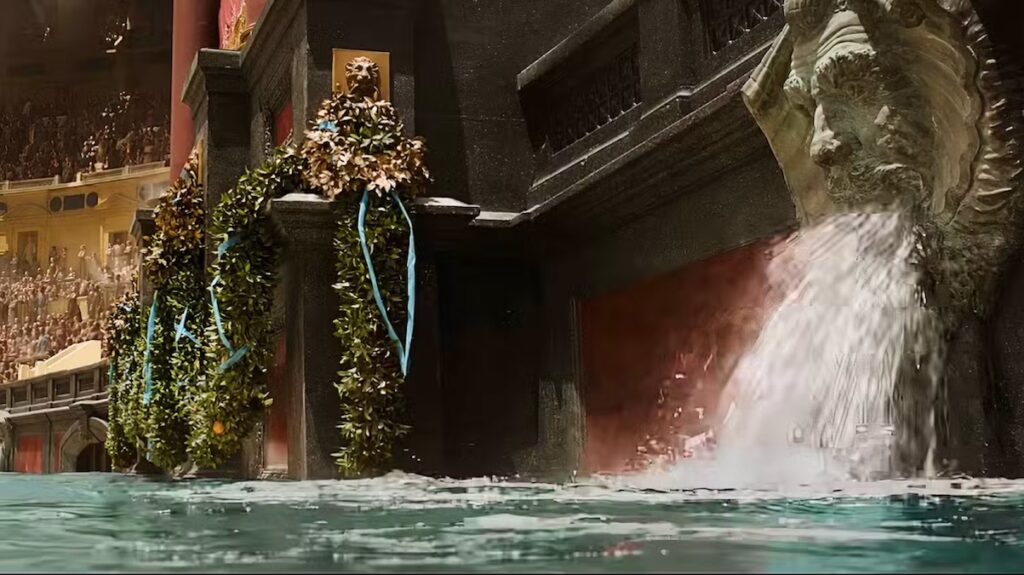While most learned Romans would know what a crocodile was, with the exotic beast capturing the imagination of many in the Greco-Roman world after the Greek historian Herodotus traveled to Egypt in the fifth century B.C., Romans experienced their own century-long era of Egyptomania following first Julius Caesar’s adventures on the Nile and then Octavian (later renamed Augustus) essentially securing his emperorship by defeating Mark Antony and Cleopatra and assimilating Egypt into the Roman Empire in 30 B.C.
Beasts from the edges of the empire proved a popular source for “hunting games” or venationes. A venatio was a special type of spectacle during Roman games/circuses where condemned men, captives, or, yes, gladiators were expected to battle against strange beasts from faraway lands. In a way, it spoke to the breadth and astonishing mystique of the empire’s reach when creatures like lions, panthers, or ostriches were brought into an amphitheater and forced to fight men to the death in front of a cheering crowd. And in the case of Egypt, the exotic creatures most popularly brought to Rome were crocodiles and hippopotamuses.
As many as 11,000 animals could be killed in a single “game” or hunt, and the crocodile had special meaning in these spectacles because Romans were taught (mostly by their Greek imperialist predecessors) to sneer at some Egyptian deities with their animal heads, including Sobek, the crocodile-headed god who was associated with the Nile and the threat of chaos. (Notably, however, the Romans did assimilate the worship of the Cult of Isis from Egypt.)
For the Colosseum—which was completed 150 years after Cleopatra’s death—there are accounts of gladiators being forced to battle crocodiles to the death in the sand. Think a bit like what we saw with tigers in the first Gladiator and the rhinoceros in Gladiator II. However, there are accounts of water shows where men in boats were tasked with hunting crocodiles similar to what occurs in Gladiator II. During the late reign of Augustus in 2 B.C., we are told that 36 crocodiles were hunted in a specially designed pool made within Rome’s Circus Flaminius, a structure originally built several centuries earlier for chariot racing.
So yes, chariot-racing arena was retrofitted into a giant pool where men were handed spears and in small boats tasked to “battle” crocodiles, which honestly still sounds fairly one-sided. However, I cannot find an account of crocodiles being used during a naumachia (naval battle) whether in the Colosseum, Circus Flaminius, or otherwise.
But if you tell a Hollywood screenwriter that “naval combat” was a popular spectacle in the Colosseum—as was crocodile battling, whether without water in the Colosseum or with it in another manmade structure—it is not hard to imagine someone saying “let’s combine them for maximum spectacle!” And then, perhaps, a British director shrugging, “Why not sharks?”
Premium IPTV Experience with line4k
Experience the ultimate entertainment with our premium IPTV service. Watch your favorite channels, movies, and sports events in stunning 4K quality. Enjoy seamless streaming with zero buffering and access to over 10,000+ channels worldwide.

















